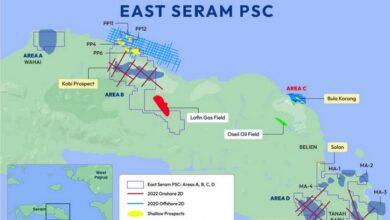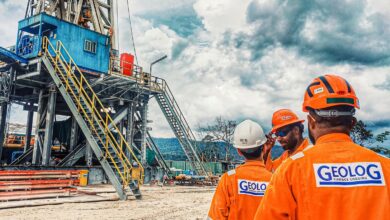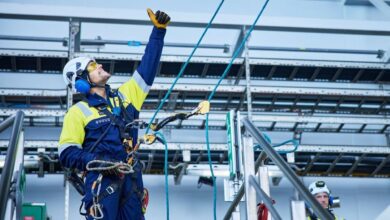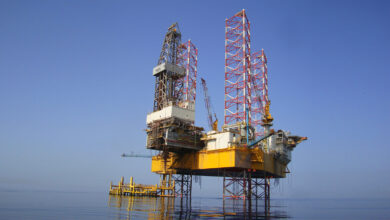PETRONAS’ Miessner: Technology gaps remain in sand control, subsea rigless interventions
Daniel Miessner is deepwater drilling adviser for PETRONAS Carigali S.B.

Offshore and deepwater
DC: How significant is the deepwater arena for PETRONAS, and is it growing?
Miessner: PETRONAS Carigali is a relatively new player as an operator in deepwater, although we’ve been a deepwater joint venture partner for 10 or years or so. We drilled our first deepwater well as an operator in 2008 off the coast of Morocco. We now have deepwater producing assets in Africa and other deepwater leases in Africa, Asia Pacific and the non US Gulf of Mexico. We have identified deepwater as a business segment we have to grow; this is one of our focus areas for growing the company. We are developing training programs and expanding staff capabilities in deepwater.
PETRONAS has a program to encourage vendors to locate in Malaysia, with the aim of making Malaysia a deepwater hub for the Asia Pacific region. Several vendors have already located in Malaysia. A number of well companies have built manufacturing facilities here, and shipyards in the region are busy building deepwater infrastructure.
DC: How has the economic recession impacted PETRONAS Carigali and your suppliers and contractors?
Miessner: We are seeing some reduction in some operators’ deepwater drilling programs, which is creating gaps on their long-term drilling sequences. We see this as an opportunity that allows us to farm into those gaps to drill some of our shorter-duration exploration programs.
The other thing we’re seeing here is that some of our contractors and suppliers have been willing to reduce their price structure, and we see that as a positive response to the economic downturn. In some cases, these reductions are being supported by lower raw material costs and in other cases by a desire to maintain market share.
DC: How many deepwater wells do you expect to drill in 2010 and in what areas?
Miessner: We plan to drill deepwater and ultra-deep wells on three different continents in 2010. So in addition to at least three rigs that we’ll having running at various times during the year, we’ll have an additional four to five rigs running year-round where we are a joint venture partner. PETRONAS has deepwater leases pretty much all over the world where we are either the operator or a joint venture partner, including in some of the emerging deepwater areas like northwest Africa and the Asia Pacific region. The number of wells we drill will be determined by a couple of things. One is our ability to farm in rigs — that have gaps in their existing sequence — to drill some of these small programs, primarily exploration wells. Another is the success of our exploration program – for example, if a discovery can generate additional appraisal drilling.
DC: What do you see as the major technology gaps today in deepwater drilling and completions?
Miessner: One of the real gaps now is the high cost to install sand control for deepwater turbidities. Right now, the most common types of sand control used for deepwater fine-grain sands are very expensive gravel packs, high-rate water packs, extension packs and so on. A few companies have been able to make expandable sand screens work in some fields, but they are not generally seen as being reliable across the board. A lot of companies shy away from them because of previous failures. I know a couple of suppliers are working on an alternate method of sand control. When a reliable, easy-to-install sand control system for deepwater fine sand is developed, it will be a real game changer for the industry. Completion and sand control costs account for more than half of the total well cost in many deepwater developments.
Another technology need that we see is pushing rigless intervention in subsea wells to the 5,000-, 6,000-ft water depth. With deepwater developments, you currently have two choices: You can do a subsea development, or some type of dry tree structure. The cost to build and install a dry tree structure is generally somewhere upwards of a billion dollars, and that’s before you drill a well. With a dry tree structure, like a TLP or spar, you have a large capital expenditure up front, but your operating costs will be lower because you have direct vertical access to the wells. With subsea developments, which we tend to lean towards, the capital cost is less, but you generally have to bring in a rig to do interventions, driving operating costs higher, particularly in areas where you don’t have a lot of deepwater rigs working or a deepwater infrastructure available. Being able to push subsea rigless intervention to 5,000 or 6,000 ft of water could reduce the operating costs for subsea development and maybe even make the dry tree structure less desirable. Once that happens, it’s a real game changer for the industry. We believe these advances will occur in the next few years.
Managed pressure drilling (MPD)
DC: What kind of opportunities do managed pressure drilling (MPD) and underbalanced drilling (UBD) open up in the deepwater arenas where you are operating?
Miessner: Managed pressure drilling is quite common in the Asia Pacific region and particularly in Malaysia, where some of the reservoirs are carbonates with very large porosity. These conditions typically lead to total losses while drilling. Significant nonproductive time can occur if MPD is not employed. MPD, particularly the pressurized mud cap drilling method, allows you to continue drilling with losses and control the well. It significantly reduces the amount of mud lost to the formation while drilling with losses. Using conventional technology without mud cap drilling requires losses to be healed before drilling can continue. Often this requires several gunk plugs or cement plugs to isolate the losses. When another loss zone is encountered, the process starts all over again, as was recently experienced by one of our joint venture partners.
Another MPD method that is frequently used in deepwater environments is the dual-gradient system where there is seawater above the mud line and a higher-density drilling fluid used below the mud line. This is used when drilling a riserless section, particularly where shallow water flows or shallow gas may be encountered. We see this technology evolving and becoming more sophisticated with advances in riserless mud recovery. The benefit is that you can reuse the mud instead of pumping it away to the sea bed. It can be returned to the rig independent of a drilling riser, treated and reused. I see a real opportunity for riserless mud recovery to become commonplace in deepwater, particularly in applications where you are batch-drilling surface holes. I think the more it gets used, the more improvements we’ll see in return systems and their deployment methods. As for underbalanced drilling, I don’t really see us gong to true UBD in deepwater anytime soon.
DC: What are the barriers to using MPD in deepwater environments?
Miessner: I think one of the real barriers to utilizing or implementing MPD is fear of the unknown by operators or individuals who have not previously used this technology.
DC: What new and emerging technologies do you believe will move the industry forward in deepwater exploration in the next 12 to 18 months?
Miessner: I think one of the obvious new technologies that is already being embraced is the offline capability of the new-generation rigs, which are helping operators reduce their well times. This technology is having a significant impact in reducing time on both exploration and development wells.
One technology I see coming to the forefront now is casing while drilling (CWD). This technology should take off once tools are developed that allow casing strings to be landed in subsea wellheads. Subsea and directional casing drilling are the next steps in CWD. Once these tools are commonly available, I believe that we will see a big increase in the use of this technology, especially for intermediate casing strings.





Excellent article.
Dan M. has provided the Deepwater contractor community with direction on innovative technologies that will ultimately improve operational efficiencies at the leading edge of deepwater exploration and development drilling.
The article also high lites Petronas’ expanding role in the deepwater arena.